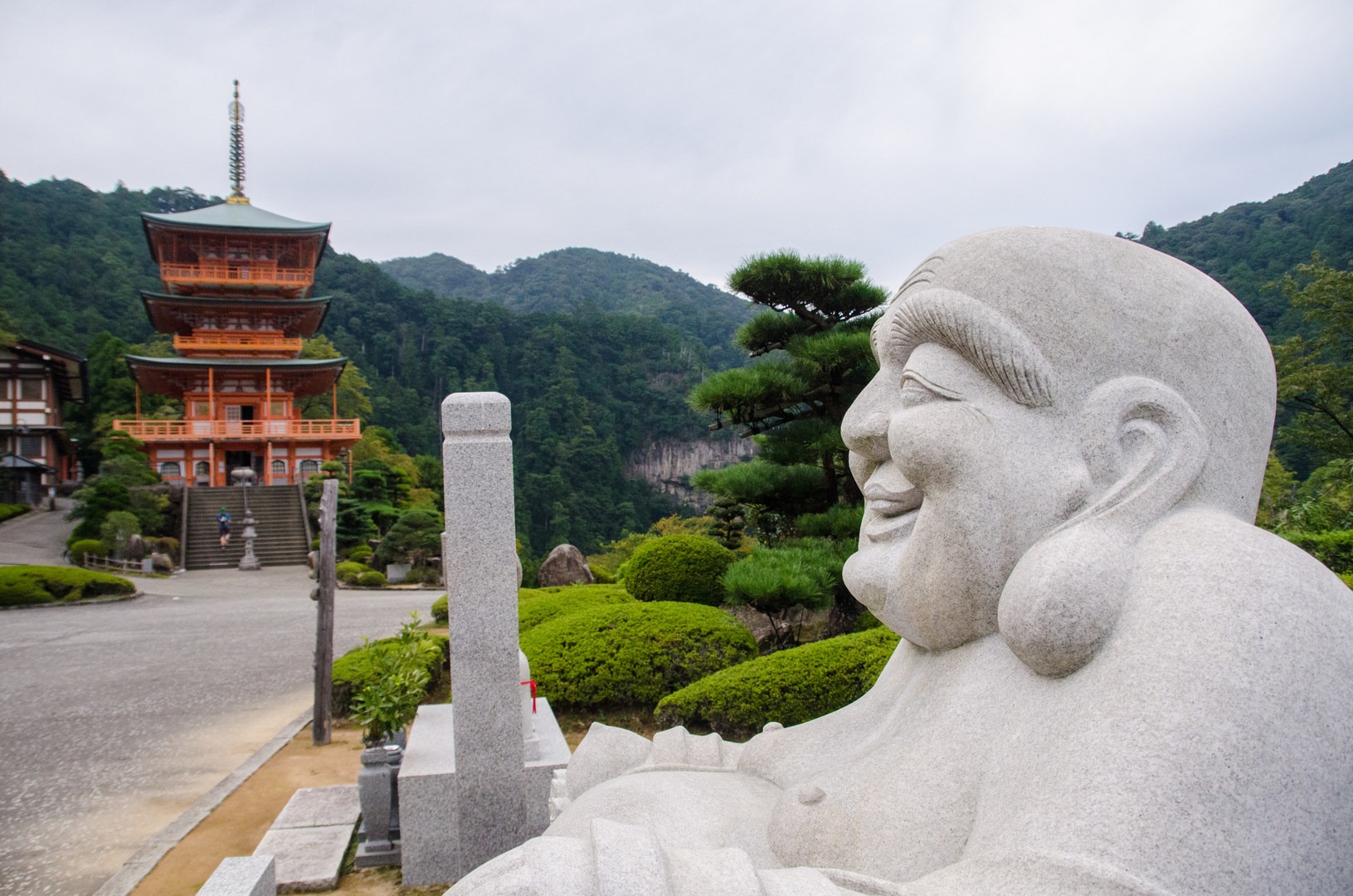You are here
One of only two UNESCO World Heritage trails, the Kumano Kodo Pilgrimage is a beautiful three- to seven- day walk through the rolling highlands of central Japan. As you walk the cobbled paths that have been used by people for over a millennium, you can really feel the history and serenity. The Nakahechi route meanders along the steep ridges of mountainous east-central Japan, passing 99 shrines to minor Buddhist and Shinto deities. The highlights are the Hongu Shrine, Nachi Taisha, and Shingu shrines, all of which have been key locations in Japanese Buhddist history. Following this pilgramage route is a terrific way to slowly take them in one at a time. While not particularly daunting, the hike offers a very unique experience.
The Kumano Kodo's Nakahechi route is the most common way to travel. It follows the original Imperial Route and is the best marked of all the variations. It also never wanders too far from civilization, allowing frequent snack and drink stops and lodgings the whole length of the route.
Definitely check the Wakayam Prefecture's Kumano Kodo website for more information; it's a bit tricky to navigate, but most information is there.
Getting there
To get to the start of the route from Kyoto or Osaka, take the JR West to Kuroshio and get off at Kii-Tanabe. Directly adjacent to the Tanabe train service is a well marked tourism office where a regular shuttle departs all day to take travelers to the start of the trail. Lunch and grocery stores are around the corner if you need to stock up. It is usually advisable to have a lunch, but nearly every day ends at a town, and you'll usually pass towns or vending machines.
Accommodation
Most people stay in lodgings along this trail. Prices vary a fair bit, and it's recommended to do some research. You can book through the Kumano Kodo website. There are hotels as well as traditional ryokans. Ryokans are a unqiue experience. The floors are tatami, and visitors sleep in the traditional style. But also be warned. You are expected to attend dinner at a precise time, and it is expected you will wear the kimono that is provided. The food is very salty, comes in small dishes, and is very, very different than western interpretations of Japanese food. Most places will also take you to an onsen or have a in-house facility. These are bath houses that you share with other people. If you are really uncomfortable with being naked with strangers or find you have trouble with a pure seafood diet, it may be worth only doing one or two nights in a ryokan. But ryokans are also a fascinating insight into a very different culture and a great way to experience something unique.
A major downside is that this is not a wilderness trek. Camping is pretty tricky, and researching the careful ettitquete of urban camping is highly recommended if you plan to attempt this.
Ojis, shrines, and temples
The route follows "99 Oji's" or small shrines that vary from simple headstones to elaborate temple complexes along the way. At many of them you will be able to use ink stamps to mark your journey. It's a fun way to look back and chart your progress.
Important shrines are normally marked by a water trough and tori gates that guard the entrance. Purify yourself here by using a ladle to scoop water into one hand, then the other, and then rinse your mouth, depositing all water outside of the main trough. Once you've finished, approach the shrine, put a coin with a hole into the box, ring the bell, bow twice, clap twice, make a prayer, and then bow to complete the ritual.
The route
There are plenty of ways to do this route. Because campsites are rare, most people will arrange to move between town sites where accommodation is plentiful.
A standard route would be Takijiri-oji to Cikatsuyu to Hongu Shrine, or Yunomine to Koguchi to Nachi Taisha Shrine where the main route ends. From there travelers can stay in Katsuura or head directly to the last shrine at Shingu.
The trail itself begins officially at the Takijiri-Oji outside of Tanabe. From here the trail will normally lead up onto the ridges and down into the valley villages. It's a well maintained trail, almost all doubletrack, though it frequently wanders onto roads, or across causeways. It often follows tone steps up and down as well. Every turn-off is well marked with a distincive sign and an English translation, so navigation is generally not especially challenging.
You will also encounter numerous historical sites that are all well signed with English explanations. It's well worth stopping and exploring these spots. Having a guide book is recommended if you enjoy hearing more about local folklore and histroy.
Pack list
- Notebook or journal to keep stamps.
- Hiking shoes. While the trail is mostly well built, many of the moss covered cobblestones get slippery when wet, and the days can go as long as six hours. Boots would likely be a little exessive.
- Umbrella. Since the route is mostly sheltered in the trees and the heat can make rain jackets comfortable, an umbrella is a better choice. A rain jacket isn't a terrible idea in addition, but make sure it's lightweight.
- Clothes for the trail and clothes for the towns and villages.
- Coin purse. You quickly accumulate a lot of change, and vending machines are frequent. Cash, and way to store the bounty of coins you'll develop, is key.
- Trekking poles. Many people will appreciate poles particularly on the steeper days.
Logistics + Planning
Current Weather: Powered by Dark Sky






























Comments
Sign In and share them.